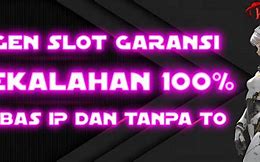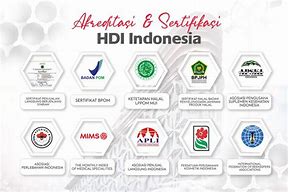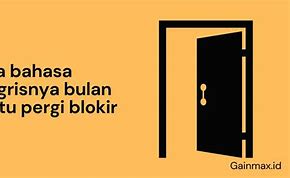
–1929: Early years
Kansas City, Missouri, natives Walt Disney and Roy O. Disney founded Disney Brothers Cartoon Studio in Los Angeles in 1923 and got their start producing a series of silent Alice Comedies short films featuring a live-action child actress in an animated world.[20] The Alice Comedies were distributed by Margaret J. Winkler's Winkler Pictures, which later also distributed a second Disney short subject series, the all-animated Oswald the Lucky Rabbit, through Universal Pictures starting in 1927.[20][21] Upon relocating to California, the Disney brothers initially started working in their uncle Robert Disney's garage at 4406 Kingswell Avenue in the Los Feliz neighborhood of Los Angeles, then, in October 1923, formally launched their studio in a small office on the rear side of a real estate agency's office at 4651 Kingswell Avenue. In February 1924, the studio moved next door to office space of its own at 4649 Kingswell Avenue. In 1925, Disney put down a deposit on a new location at 2719 Hyperion Avenue in the nearby Silver Lake neighborhood, which came to be known as the Hyperion Studio to distinguish it from the studio's other locations, and, in January 1926, the studio moved there and took on the name Walt Disney Studio.[22]
Meanwhile, after the first year's worth of Oswalds, Walt Disney attempted to renew his contract with Winkler Pictures, but Charles Mintz, who had taken over Margaret Winkler's business after marrying her, wanted to force Disney to accept a lower advance payment for each Oswald short. Disney refused and, as Universal owned the rights to Oswald rather than Disney, Mintz set up his own animation studio to produce Oswald cartoons. Most of Disney's staff was hired away by Mintz to move over once Disney's Oswald contract expired in mid-1928.[23]
Working in secret while the rest of the staff finished the remaining Oswalds on contract, Disney and his head animator Ub Iwerks led a small handful of loyal staffers in producing cartoons starring a new character named Mickey Mouse.[24] The first two Mickey Mouse cartoons, Plane Crazy and The Galloping Gaucho, were previewed in limited engagements during the summer of 1928. For the third Mickey cartoon, however, Disney produced a soundtrack, collaborating with musician Carl Stalling and businessman Pat Powers, who provided Disney with his bootlegged "Cinephone" sound-on-film process. Subsequently, the third Mickey Mouse cartoon, Steamboat Willie, became Disney's first cartoon with synchronized sound and was a major success upon its November 1928 debut at the West 57th Theatre in New York City.[25] The Mickey Mouse series of sound cartoons, distributed by Powers through Celebrity Productions, quickly became the most popular cartoon series in the United States.[26][27] A second Disney series of sound cartoons, Silly Symphonies, debuted in 1929 with The Skeleton Dance.[28]
Kim Possible Movie: So the Drama
/Foto: Disney Channel
Diproduksi oleh Disney Channel, Kim Possible adalah serial kartun yang mengisahkan seorang remaja putri biasa. Namun di luar sekolah ia menjadi seorang agen rahasia yang bertugas memberantas kejahatan.
Dalam petualangannya, Kim Possible dibantu oleh teman-temannya, Ron Stoppable dan Wade, untuk melindungi dunia dari rencana jahat para penjahat.
Marvel Rising: Secret Warriors (2018)
Para remaja sekolah memiliki kekuatan super Ms. Marvel, Squirrel Girl, Quake, Patriot, American Chavez, dan Inferno bekerja sama untuk berjuang dan melawan ancaman dari berbagai pihak dengan kekuatan mereka.
Planet Hulk (2010)
Jika Hulk sedang marah ia akan berubah menjadi sosok yang besar, hijau, dan pemarah. Suatu saat, ia menjadi penumpang pesawat ulang-aling yang mendarat di planet Sakaar.
Planet Sakaar ini dikuasai oleh Raja Merah yang jahat yang suka mengadu domba prajurit satu sama lain di arena besar. Hulk mulai bekerjasama dengan sesama prajurit. Kekuatan mereka begitu besar saat bekerjasama. Mereka bersatu untuk mengalahkan penculik. Namun, mereka kalah jumlah dan kurang perlengkapan.
–1948: New feature films, strike and World War II
The success of Snow White allowed Disney to build a new, larger studio on Buena Vista Street in Burbank, where The Walt Disney Company remains headquartered to this day. Walt Disney Productions had its initial public offering on April 2, 1940, with Walt Disney as president and Roy Disney as CEO.[51]
The studio launched into the production of new animated features, the first of which was Pinocchio, released in February 1940. Pinocchio was not initially a box office success.[52] The box office returns from the film's initial release were below both Snow White's unprecedented success and the studio's expectations.[52][53] Of the film's $2.289 million cost – twice of Snow White – Disney recouped $1 million by late 1940, with studio reports of the film's final original box office take varying between $1.4 million and $1.9 million.[54] However, Pinocchio was a critical success, winning the Academy Award for Best Original Song and Best Original Score, making it the first film of the studio to win not only either Oscar, but both at the same time.[55]
Fantasia, an experimental film produced to an accompanying orchestral arrangement conducted by Leopold Stokowski, was released in November 1940 by Disney itself in a series of limited-seating roadshow engagements. The film cost $2 million to produce and, although the film earned $1.4 million in its roadshow engagements,[56] the high cost ($85,000 per theater)[56] of installing Fantasound placed Fantasia at a greater loss than Pinocchio. RKO assumed distribution of Fantasia in 1941,[58] later reissuing it in severely edited versions over the years.[60] Despite its financial failure, Fantasia was the subject of two Academy Honorary Awards on February 26, 1942 – one for the development of the innovative Fantasound system used to create the film's stereoscopic soundtrack, and the other for Stokowski and his contributions to the film.[61] Fantasia was the final Disney animated film to be completed at the Hyperion Studio of the Walt Disney Studios (Walt Disney Productions) in Los Angeles.
Much of the character animation on these productions and all subsequent features until the late 1970s was supervised by a brain-trust of animators Walt Disney dubbed the "Nine Old Men", many of whom also served as directors and later producers on the Disney features: Frank Thomas, Ollie Johnston, Woolie Reitherman, Les Clark, Ward Kimball, Eric Larson, John Lounsbery, Milt Kahl, and Marc Davis.[62] Other head animators at Disney during this period included Norm Ferguson, Bill Tytla and Fred Moore. The development of the feature animation department created a caste system at the Disney studio: lesser animators (and feature animators in-between assignments) were assigned to work on the short subjects, while animators higher in status such as the Nine Old Men worked on the features. Concern over Walt Disney accepting credit for the artists' work as well as debates over compensation led to many of the newer and lower-ranked animators seeking to unionize the Disney studio.
A bitter union strike began in May 1941, which was resolved without the angered Walt Disney's involvement in July and August of that year. As Walt Disney Productions was being set up as a union shop, Walt Disney and several studio employees were sent by the U.S. government on a Good Neighbor policy trip to Central and South America.[64] The Disney strike and its aftermath led to an exodus of several animation professionals from the studio, from top-level animators such as Art Babbitt and Bill Tytla to artists better known for their work outside the Disney studio such as Frank Tashlin, Maurice Noble, Walt Kelly, Bill Melendez, and John Hubley. Hubley, along with several other Disney strikers, went on to found the United Productions of America studio, Disney's key animation rival in the 1950s.
Dumbo, in production during the midst of the animators' strike, premiered in October 1941 and proved to be a financial success. The film cost $950,000 to produce, half the cost of Snow White and the Seven Dwarfs, less than a third of the cost of Pinocchio, and two-fifths of the cost of Fantasia. Dumbo eventually grossed $1.6 million during its original release.[65] Dumbo was the first Disney animated film to be completed at the original Animation Building of the Walt Disney Studios (Walt Disney Productions) in Burbank, California. In August 1942, Bambi was released and, as with Pinocchio and Fantasia, did not perform well at the box office. Out of its $1.7 million budget, it grossed $1.64 million.[66]
Production of full-length animated features was temporarily suspended after the release of Bambi. Given the financial failures of some of the recent features and World War II cutting off much of the overseas cinema market, the studio's financiers at the Bank of America would only loan the studio working capital if it temporarily restricted itself to shorts production.[67] Features then in production such as Peter Pan, Alice in Wonderland and Lady and the Tramp were therefore put on hold until after the war.[67] Following the United States' entry into World War II after the attack on Pearl Harbor, the studio housed over 500 U.S. Army soldiers who were responsible for protecting nearby aircraft factories from enemy bombers. In addition, several Disney animators were drafted to fight in the war and the studio was contracted on producing wartime content for every branch of the U.S. military, particularly military training, and civilian propaganda films. From 1942 to 1943, 95 percent of the studio's animation output was for the military.[68] During the war, Disney produced the live-action/animated military propaganda feature Victory Through Air Power (1943),[69] and a series of Latin culture-themed shorts resulting from the 1941 Good Neighbor trip were compiled into two features, Saludos Amigos (1942) and The Three Caballeros (1944).[69]
Saludos Amigos and The Three Caballeros set the template for several other 1940s Disney releases of "package films": low-budgeted films composed of animated short subjects with animated or live-action bridging material.[70][71] These films were Make Mine Music (1946), Fun and Fancy Free (1947), Melody Time (1948) and The Adventures of Ichabod and Mr. Toad (1949). The studio also produced two features, Song of the South (1946) and So Dear to My Heart (1948), which used more expansive live-action stories which still included animated sequences and sequences combining live-action and animated characters. Shorts production continued during this period as well, with Donald Duck, Goofy, and Pluto cartoons being the main output accompanied by cartoons starring Mickey Mouse, Figaro and, in the 1950s, Chip 'n' Dale and Humphrey the Bear.[72]
In addition, Disney began reissuing the previous features, beginning with re-releases of Snow White in 1944,[73] Pinocchio in 1945, and Fantasia in 1946.[74] This led to a tradition of reissuing the Disney films every seven years, which lasted into the 1990s before being translated into the studio's handling of home video releases.[73]
–2019: Continued resurgence; John Lasseter and Ed Catmull's departure
After The Princess and the Frog, the studio released Tangled, a musical CGI adaptation of the Brothers Grimm fairy tale "Rapunzel" with songs by Alan Menken and Glenn Slater. In active development since 2002 under Glen Keane,[199] Tangled, directed by Byron Howard and Nathan Greno, was released in 2010 and became a significant critical and commercial success[239][240] and was nominated for several accolades. The film earned $592 million in worldwide box office revenue, becoming the studio's third most successful release to date.[241]
The hand-drawn feature Winnie the Pooh, a new feature film based on the eponymous stories by A. A. Milne, followed in 2011 to positive reviews; it remains the studio's most recent hand-drawn feature.[242] The film was released in theaters alongside the hand-drawn short The Ballad of Nessie.[243] Wreck-It Ralph, directed by Rich Moore, was released in 2012 to critical acclaim and commercial success. A comedy-adventure about a video-game villain who redeems himself as a hero, it won numerous awards, including the Annie, Critics' Choice and Kids' Choice Awards for Best Animated Feature Film, and received Golden Globe and Academy Award nominations.[244] The film earned $471 million in worldwide box office revenue.[245][246][247] In addition, the studio won its first Academy Award for a short film in forty-four years with Paperman, which was released in theaters with Wreck-It Ralph.[248][249] Directed by John Kahrs, Paperman utilized new software developed in-house at the studio called Meander, which merges hand-drawn and computer animation techniques within the same character to create a unique "hybrid". According to Producer Kristina Reed, the studio is continuing to develop the technique for future projects,[249] including an animated feature.[242]
In 2013, the studio laid off nine of its hand-drawn animators, including Nik Ranieri and Ruben A. Aquino,[250] leading to speculation on animation blogs that the studio was abandoning traditional animation, an idea that the studio dismissed.[251] Later that same year, in November, Frozen, a CGI musical film inspired by Hans Christian Andersen's fairy tale "The Snow Queen", was released to widespread acclaim and became a blockbuster hit. Directed by Chris Buck and Jennifer Lee with songs by the Broadway team of Robert Lopez and Kristen Anderson-Lopez,[252] it was the first Disney animated film to earn over $1 billion in worldwide box office revenue.[244][252][253] Frozen also became the first film from Walt Disney Animation Studios to win the Academy Award for Best Animated Feature (a category started in 2001), as well as the first feature-length motion picture from the studio to win an Academy Award since Tarzan and the first to win multiple Academy Awards since Pocahontas.[254] It was released in theaters with Get a Horse!, a new Mickey Mouse cartoon combining black-and-white hand-drawn animation and full-color CGI animation.[255]
The studio's next feature, Big Hero 6, a CGI comedy-adventure film inspired by the Marvel Comics series of the same name, was released in November 2014.[256] For the film, the studio developed new light rendering software called Hyperion, which the studio continued to use on all subsequent films.[257] Big Hero 6 received critical acclaim and was the highest-grossing animated film of 2014, also winning the Academy Award for Best Animated Feature.[258][259][260][261] The film was accompanied in theaters by the animated short Feast, which won the Academy Award for Best Animated Short Film.[262][263] In the same month that Big Hero 6 was released, it was announced that General Manager, Andrew Millstein had been promoted as President of Walt Disney Animation Studios.[208][264][265][266]
In March 2016, the studio released Zootopia, a CGI buddy-comedy film set in a modern world inhabited by anthropomorphic animals.[267] The film was a critical and commercial success, grossing over $1 billion worldwide, and won the Academy Award for Best Animated Feature.[268][269][270][271]
Moana, a CGI fantasy-adventure film, was released in November 2016.[272] The film was shown in theaters with the animated short, Inner Workings.[273] Moana was another commercial and critical success for the studio, grossing over $600 million worldwide and receiving two Academy Award nominations.[274][275]
In November 2017, John Lasseter announced that he was taking a six-month leave of absence after acknowledging what he called "missteps" in his behavior with employees in a memo to staff. According to various news outlets, Lasseter had a history of alleged sexual misconduct towards employees.[276][277][278] On June 8, 2018, it was announced that Lasseter would leave Disney and Pixar at the end of the year after the company decided not to renew his contract, but he would take on a consulting role until it expired.[279][280] Jennifer Lee was announced as Lasseter's replacement as chief creative officer of Disney Animation on June 19, 2018.[280][281]
On June 28, 2018, the studio's division Disneytoon Studios was shut down, resulting in the layoffs of 75 animators and staff.[282] On October 23, 2018, it was announced that Ed Catmull would be retiring at the end of the year, and would stay in an adviser role until July 2019.[283]
In November 2018, the studio released a sequel to Wreck-It Ralph, titled Ralph Breaks the Internet.[284] The film grossed over $529 million worldwide and received nominations for a Golden Globe and an Academy Award, both for Best Animated Feature.[285][286][287][288]
Documentary films about Disney animation
34°09′20″N 118°19′23″W / 34.15556°N 118.32306°W / 34.15556; -118.32306
0%0% found this document useful, Mark this document as useful
0%0% found this document not useful, Mark this document as not useful
0%0% encontró este documento útil, Marcar este documento como útil
0%A un 0% le pareció que este documento no es útil, Marcar este documento como no útil
Sejak memperkenalkan film kartun pertama mereka, Snow White and the Seven Dwarfs pada tahun 1937, Disney berhasil menghasilkan banyak film kartun yang menjadi favorit banyak orang dari segala usia dan menjadi tontonan seru di seluruh dunia.
Film-film ini tidak hanya memukau dengan animasi yang indah, tetapi juga dengan cerita yang menarik dan karakter yang ikonik. Setiap film Disney menawarkan pengalaman yang unik dengan tema dan karakter yang berbeda-beda, dan banyak di antaranya yang memenangkan banyak penghargaan.
Selain itu, film-film ini mampu menarik perhatian banyak penonton sehingga menjadikannya sebagai tontonan seru dan menghibur bagi semua kalangan. Dalam artikel ini, Bubun sudah rangkum 35 film kartun Disney terbaik sepanjang masa yang berhasil mendapat rating tertinggi.
Snow White and the Seven Dwarfs (1937)
Seorang ratu jahat yang cemburu dengan kecantikan Putri Salju memerintahkan pengawalnya untuk melakukan pembunuhan kepada putri tirinya yang tidak bersalah. Tetapi, ia menemukan bahwa Putri Salju masih hidup dan bersembunyi di sebuah pondok dengan tujuh penambang kecil.
Ratu jahat mencoba menyamar sebagai wanita tua. Sang ratu membawa apel beracun ke Putri Salju untuk membuatnya tertidur seperti kematian yang hanya dapat dipatahkan dengan ciuman dari sang pangeran.
Ketika kerajaan mereka terjebak dalam musim dingin abadi, Anna (Kristen Bell) yang tak kenal takut bergabung dengan pendaki gunung Kristoff (Jonathan Groff) dan sahabat karib rusa untuk menemukan saudara perempuan Anna, Ratu Salju Elsa (Idina Menzel), dan mematahkan mantra esnya.
Dalam perjalanan epik tersebut, mereka bertemu dengan troll mistis, manusia salju komedi (Josh Gad), kondisi yang keras, dan sihir di setiap kesempatan. Meski demikian, Anna dan Kristoff dengan berani maju untuk menyelamatkan kerajaan mereka dari cengkeraman dingin musim dingin.
Highest-grossing films
† Indicates films playing in theatres in the week commencing 13 December 2024.
–1989: Michael Eisner takeover, restructuring and return to prominence
After a series of corporate takeover attempts in 1984, Roy E. Disney, son of Roy O. and nephew of Walt, resigned from the company's board of directors and launched a campaign called "SaveDisney", successfully convincing the board to fire Miller. Roy E. Disney brought in Michael Eisner as Disney's new CEO and Frank Wells as president.[101][115] Eisner in turn named Jeffrey Katzenberg chairman of the film division, The Walt Disney Studios.[103] Near completion when the Eisner regime took over Disney, The Black Cauldron (1985) came to represent what would later be referred to as the "rock bottom" point for Disney animation.[103] The studio's most expensive feature to that point at $44 million, The Black Cauldron was a critical and commercial failure.[103] The film's $21 million box office gross led to a loss for the studio, putting the future of the animation division in jeopardy.[103]
Between the 1950s and 1980s, the significance of animation to Disney's bottom line was significantly reduced as the company expanded into further live-action production, television and theme parks.[103] As new CEO, Michael Eisner strongly considered shuttering the feature animation studio and outsourcing future animation. Roy E. Disney intervened, offering to head the feature animation division and turn its fortunes around,[103] while Eisner established the Walt Disney Pictures Television Animation Group to produce lower-cost animation for television.[101] Named Chairman of feature animation by Eisner, Roy E. Disney appointed Peter Schneider president of animation to run the day-to-day operations in 1985.[116]
On February 6, 1986, Disney executives moved the animation division from the Disney studio lot in Burbank to a variety of warehouses, hangars and trailers located about two miles east (3.2 kilometers) at 1420 Flower Street in nearby Glendale, California. About a year later, the growing computer graphics (CG) group would move there too.[103][117] The animation division's first feature animation at its new location was The Great Mouse Detective (1986), begun by John Musker and Ron Clements as Basil of Baker Street after both left production of The Black Cauldron.[118] The film was enough of a critical and commercial success to instill executive confidence in the animation studio.[103] Later the same year, however, Universal Pictures and Steven Spielberg's Amblin Entertainment released Don Bluth's An American Tail, which outgrossed The Great Mouse Detective at the box office and became the highest-grossing first-issue animated film to that point.[119]
Katzenberg, Schneider, and Roy Disney set about changing the culture of the studio, increasing staffing and production so that a new animated feature would be released every year instead of every two to four.[103] The first of the releases on the accelerated production schedule was Oliver & Company (1988), which featured an all-star cast including Billy Joel and Bette Midler and an emphasis on a modern pop soundtrack.[103] Oliver & Company opened in the theaters on the same day as another Bluth/Amblin/Universal animated film, The Land Before Time; however, Oliver & Company outgrossed The Land Before Time in the U.S. and went on to become the most successful animated feature in the U.S. to that date, though the latter's worldwide box office gross was higher than the former.[103]
At the same time in 1988, Disney started entering into Australia's long-standing animation industry by purchasing Hanna-Barbera's Australian studio to start Disney Animation Australia.[120]
While Oliver & Company and the next feature The Little Mermaid were in production, Disney collaborated with Steven Spielberg's Amblin Entertainment and master animator Richard Williams to produce Who Framed Roger Rabbit, a groundbreaking live-action/animation hybrid directed by Robert Zemeckis, which featured licensed animated characters from other studios (such as Warner Bros., MGM, and Universal).[122] Disney set up a new animation studio under Williams' supervision in London to create the cartoon characters for Roger Rabbit, with many of the artists from the California studio traveling to England to work on the film.[103][123] A significant critical and commercial success,[123] Roger Rabbit won three Academy Awards for technical achievements.[124] and was key in renewing mainstream interest in American animation.[103] Other than the film itself, the studio also produced three Roger Rabbit shorts during the late 1980s and early 1990s.[125][126]



